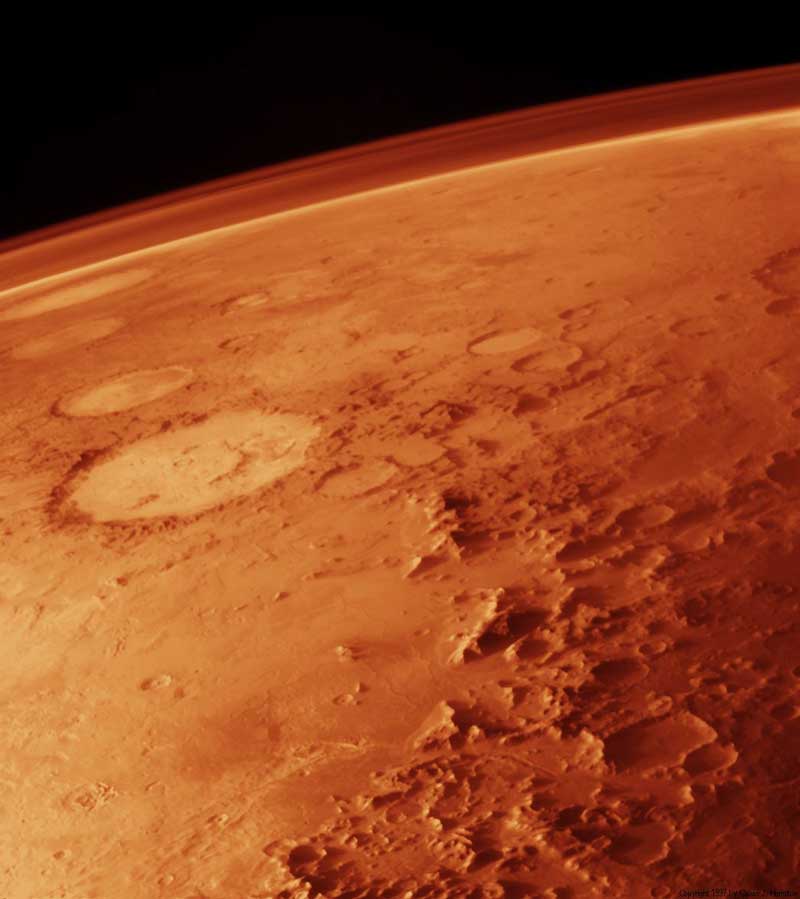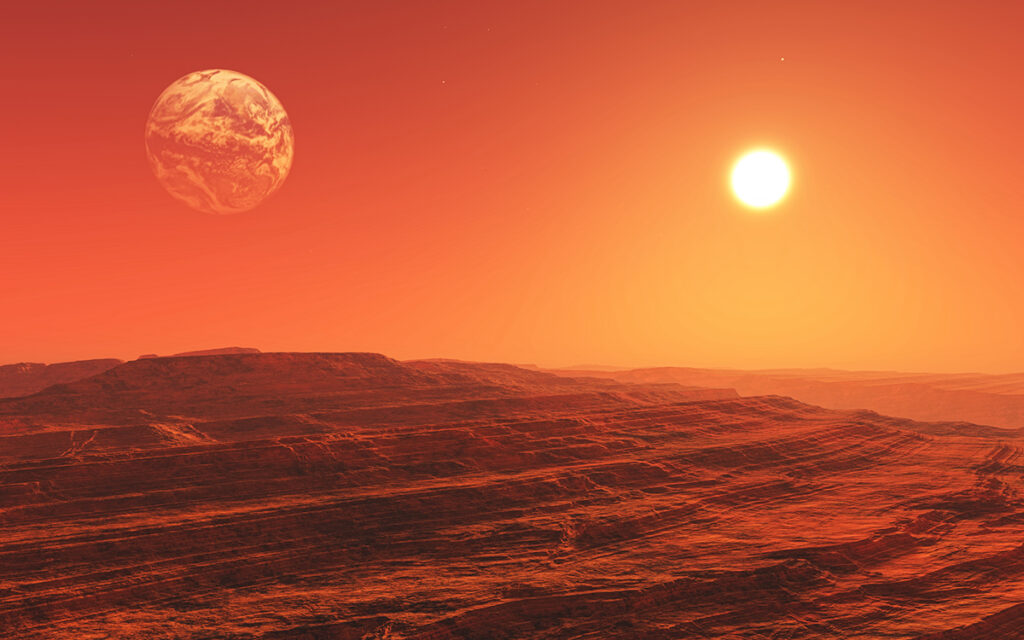- The sun: Mars is the fourth planet from the sun. Its distance to the sun is approximately 228 million km
- Day: 1 day on Mars (the time it takes Mars to rotate once around itself) lasts just over 24 hours (24.6 hours) – almost like a day here on Earth
- Year: 1 year (the time it takes Mars to rotate once around the sun) is equivalent to 687 days here on Earth
- Gravity: The gravity on Mars is only 37% of the gravity on Earth. This means that with the same force, you can jump 3 times higher on Mars than on Earth
- Surface: Mars is a rocky planet whose surface is characterized by volcanoes, meteor impacts, crustal movements, atmospheric effects and dust storms (sandstorms)
- Characteristics: Mars has no rings and no global magnetic field. Mars has a thin atmosphere consisting primarily of carbon dioxide, nitrogen and argon. Mars also has 2 moons: Phobos and Deimos
- Spacecraft: More than 40 spacecraft have visited Mars – flying by, orbiting and landing on the planet’s surface. The first successful mission to Mars was ‘Mariner 4’ in 1965
- Largest volcano: Mars has the largest volcano in the entire solar system, Olympus Mons, which is 25 km high and has a diameter of 600 km. In comparison, Earth’s largest volcano, Mauna Loa, is just over 4 km high (4,169 m) and 3-5 km wide
- Gorges: Mars has several canyon systems, most notably the Valles Marineris system that runs around the equator. Although it’s not a fact, modern-day experts believe these canyons were created by water
- Name: Mars is also known as the “Red Planet” because iron minerals in the planet’s soil oxidize – i.e. rust – causing the soil and dusty atmosphere to appear reddish. The name Mars itself comes from Roman mythology, where Mars was the god of war. The reason why the Romans chose to name Mars after their god of war is the planet’s red color, which is reminiscent of blood

Fact: Mars has its red color because iron particles in the planet’s soil and dust rust when oxidized
More facts about Mars
- Liv: At this point in the planet’s history, Mars cannot support life (at least not life as we know it). One of the main scientific goals is to find out if there has been and could be potential for life on Mars in the past and in the future
- Seasons: Due to its tilt, Mars has seasons that affect its surface – just like Earth. However, the seasons on Mars are longer than on Earth, as Mars is 1.5 times further away from the sun and is also slightly elliptical (this causes its distance from the sun to vary, thus extending the seasons)
- Poles: Mars has white patches around the poles – but whether these contain water is not yet known. The size of the poles varies according to the seasons
| Mars’ profile | |
| Mass: | 6,4185×1023 kg (0.107 x Earth) |
| Eccentricity: | 0,093315 |
| Diameter at the equator: | 6,794 km |
| Circumference at the equator: | 24,343 km |
| Circulation speed: | 24.077 km/s |
| Aphelion: | 249,209,300 km |
| Perihelion: | 206,669,000 km |
| Average distance from the sun: | 227,940,000 km |
| Surface temperature: | -143 to 35 °C |


